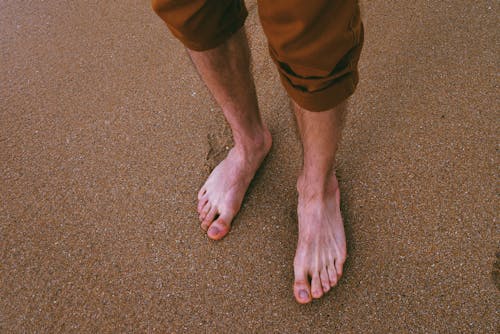Why Plantar Fasciitis Treatment Matters in Local Communities
For some athletes, just changing running shoes can significantly reduce plantar fascia pain. A physiotherapist can use a variety of various taping methods to support the plantar fascia, providing it an opportunity to heal. Some shoes can be fitted with inserts. One example is an orthotic, which spans the length of the shoe.
Another choice is a heel cup. This insert is created to support and cushion the heel. Plantar fasciitis is connected with less versatility in the ankle, Achilles tendon, and calf muscles. Mild extending to enhance flexibility can make the biomechanics of standing, strolling, and jogging less difficult for the plantar fascia.
Using mild pressure, roll the tennis ball back and forth under the foot. Stand 18 inches away from a wall with feet about 6 inches apart and place hands against the wall, at shoulder height. Without moving feet, lean into the wall, flexing the foot and extending the Achilles tendon and calf muscles Sit on the floor with legs straight in front.
Plantar Fasciitis Treatment - Earning and Acquisition
Stretches like these last 2, in which the top of the foot and toes approach the shin, are called dorsiflexion stretches. Using a cold-pack or bag of ice to bottom of the foot may provide discomfort relief from plantar fasciitis. Relief can also be found by rolling the bottom of the foot on a frozen plastic water bottle.
Protocol Concepts. For runners, increasing the number of actions per mileusing a shorter stride but increasing cadence to preserve speedmay minimize the tension on the plantar fascia although there will be more steps per minute.1.Additional weight puts an increased strain on the plantar fascia tissue. Shedding excess pounds will lighten the load on the body's musculoskeletal system, consisting of the plantar fascia.
This prevents the plantar fascia from resting in a contracted position. (Naturally, lots of people find these splints tough to oversleep.). While it is not considered basic treatment, deep myofascial massage may promote blood circulation and healing. While not all specialists agree, some believe the use of manual manipulation/mobilization (by a chiropractic practitioner or other competent health professional) in addition to workout is an effective way to deal with plantar fasciitis.2, Individuals with consistent, moderate to serious cases of plantar fasciitis, may use these non-medical treatments in combination with medications, injections, or surgical treatments.
Conversion-oriented Plantar Fasciitis Treatment Strategies

Medications are not a cure for plantar fasciitis and must be used in combination with other treatments. Non-steroidal anti-inflammatory drugs are used to reduce swelling and inflammation, and are suggested for patients experiencing moderate to severe discomfort (Visit Your Url). NSAIDs consist of aspirin (e.g. Bayer), ibuprofen (e.g. Advil), naproxen (e.g. Aleve), and cox-2 inhibitors.
dexamethasone) through healthy skin to the aching location.1 Iontophoresis may be suggested to patients with plantar fasciitis who can't endure injections or wish to avoid injections. If non-medical treatments and medications do not offer relief from plantar fasciitis, patients might consider injections. 1. Wellenkotter J, Kernozek TW, Meardon S, Suchomel T.

Int J Sports Med. 2014; 35( 9 ):779 -84.2. Bronfort G, Haas M, Evans R, Leininger B, Triano J. Effectiveness of manual treatments: the UK evidence report. Chiropr Osteopat. 2010; 18:3.3. Clar C, Tsertsvadze A, Court R, Hundt GL, Clarke A, Sutcliffe P. Medical efficiency of manual treatment for the management of musculoskeletal and non-musculoskeletal conditions: systematic review and upgrade of UK evidence report.
It's Everything about the Plantar Fasciitis Treatment
The plantar fascia is a long, thin ligament present along the bottom of the foot that develops the arch of the foot. It extends from the heel bone, and then splits and fans out to connect itself to the toes. Plantar fasciitis is a condition where the plantar fascia ends up being inflamed from overstretching or overuse, causing discomfort in the heel and bottom of the foot.
Plantar fasciitis takes place when you strain or irritate the plantar fascia ligament. Repetitive strain can lead to tiny tears in the ligament, leading to pain and swelling, which can make walking hard. Stress can happen due to: High or low foot arch Obesity or unexpected weight gain Tight Achilles tendon which links the calf muscles to the heel Starting a brand-new activity or increasing the intensity of an activity Wearing inappropriate shoes with soles that are too soft, do not fit well or provide bad arch assistance The major grievance of plantar fasciitis is pain and tightness in the heel and foot.
Your doctor may view how you stand and stroll, and examine associated conditions such as high arches. X-rays of the foot can be taken if your physician thinks a stress fracture, a hairline fracture in the bone, or other related conditions such as a heel spur, which is extra calcium deposit on the heel bone.
What Is Plantar Fasciitis Treatment And How Does It Matter?
Conservative treatment procedures consist of: Rest: Rest is the initial step that is considered for reducing discomfort and preventing further damage to the ligament. Ice: Rolling your foot over ice can be very effective in reducing swelling, and is advised for 20 minutes, 3-4 times a day Medications: NSAIDs (non-steroidal anti-inflammatory drugs) may be prescribed for relief of discomfort and inflammation Exercise: calf stretches and plantar fascia stretches work in relieving pain A steroid injection might be administered into the plantar fascia for reducing pain and swelling Supportive shoes and orthotics might likewise be advised to lower the discomfort while strolling or standing Night splints can be recommended by your physician to assist stretch the plantar fascia while sleeping Physical treatment may be suggested for instruction on extending workouts, massage and ice treatments PT might utilize extracorporeal shockwave treatment (ESWT), which uses high-energy shockwave impulses to promote recovery of the harmed plantar fascia tissues Surgical treatment is thought about only if conservative treatment does not offer efficient relief after 12 months.
Gastrocnemius economic crisis: Tight calf muscles or gastrocnemius muscles can strain the plantar fascia. To launch this stress, your cosmetic surgeon will surgically extend the calf muscle, and increase the motion of the ankle (His Comment Is Here). The surgery can be performed by open incision or endoscopically through a small incision by utilizing an endoscope, which is a long instrument with a small video camera attached.
Your surgeon will partially cut the plantar fascia ligament to eliminate the tension. The surgery can be carried out endoscopically however open incision is simpler to perform and is connected with lower danger of nerve damage. Issues are uncommon following surgical treatment to treat plantar fasciitis, but just like any surgery, they can occur.
Aspects of Plantar Fasciitis Treatment You Ought To Know
If you are experiencing symptoms of plantar fasciitis, extensive treatment from our foot experts is readily available at ORA Orthopedics. As the biggest and most innovative orthopedic practice in the Quad Cities, ORA Orthopedics offers the best options in care to kids and adults with a large selection of musculoskeletal conditions, consisting of plantar fasciitis and other uneasy or uncomfortable foot issues (Find Out Here Now).
This condition is generally marked by greater foot discomfort and tightness after not during workout or extended durations of inactivity. Plantar fasciitis may likewise trigger bone stimulates, or small boney growths, to establish on the heel bone. The knowledgeable medical professionals and personnel at ORA Orthopedics' Foot and Ankle Center of Excellence are trained in the most recent treatment strategies and use patient-focused care that is 2nd to none in the Quad Cities.
No comments:
Post a Comment